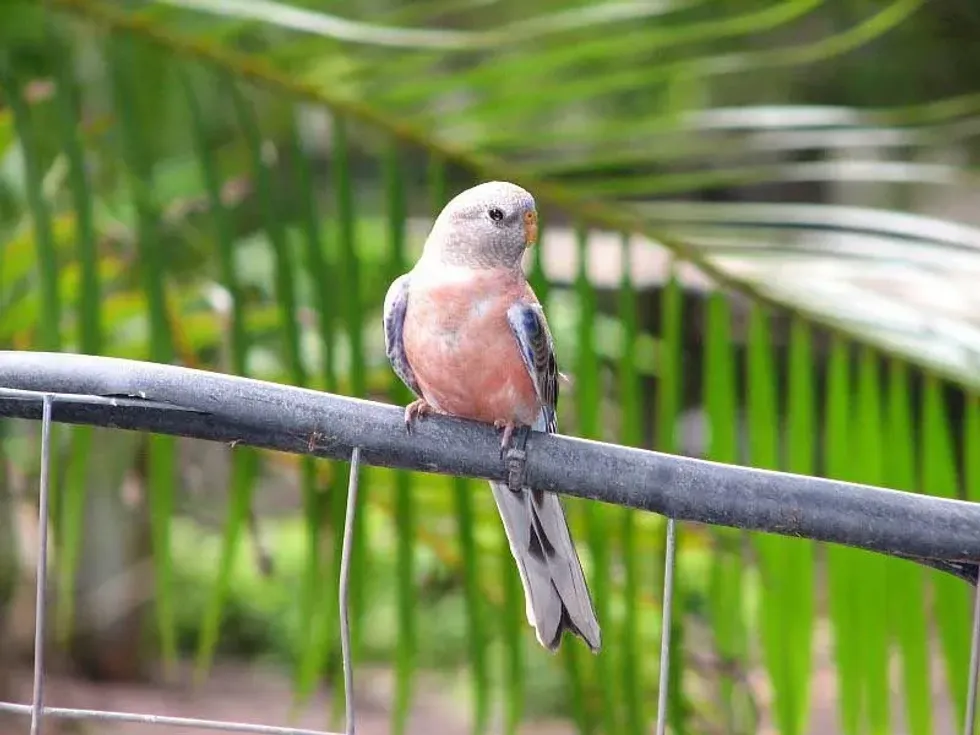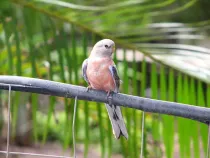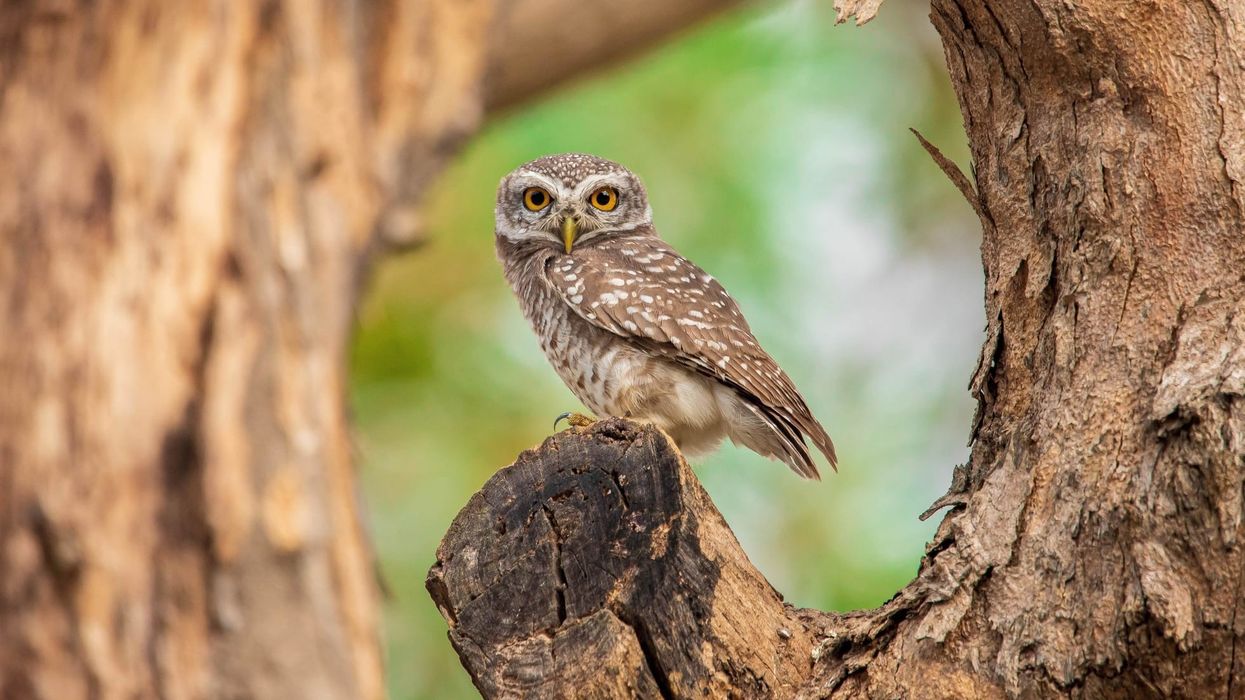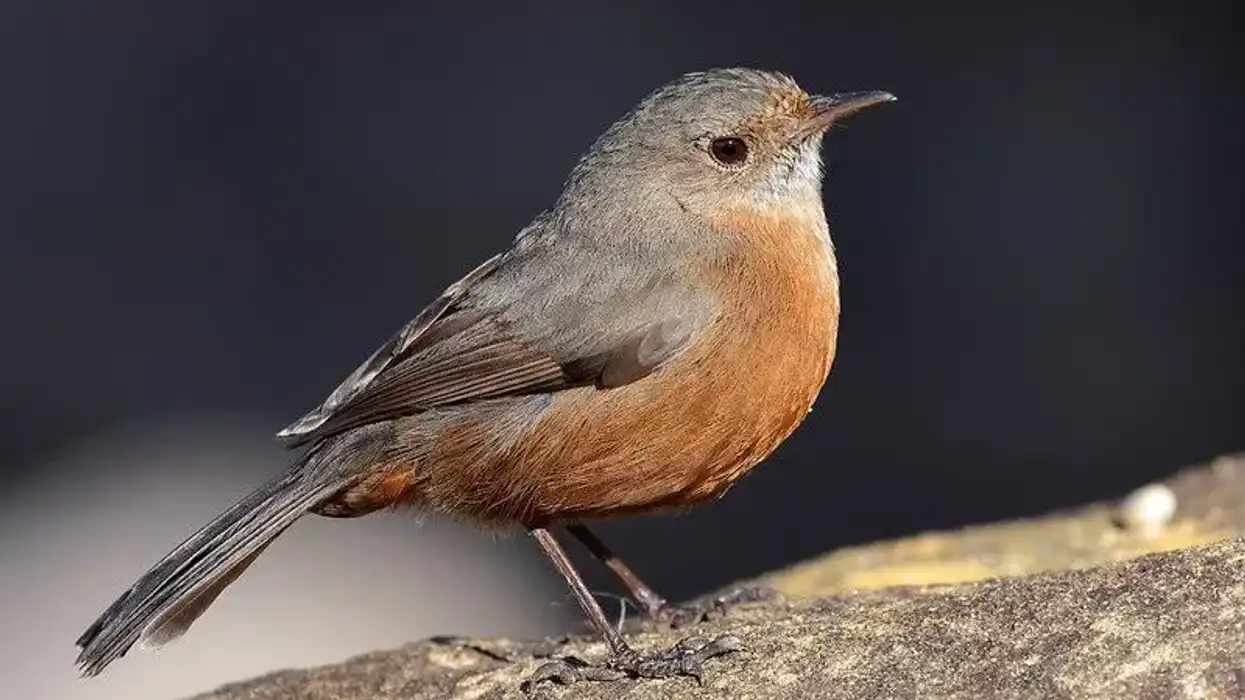Who doesn't like to learn about colorful bird species? We do! Let us learn about the Bourke's parakeet (Neopsephotus bourkii), which is an Australian parrot species.
The beautiful bird's name is on Sir Richard Bourke, the governor of New South Wales during 1831-1837. This bird is also known by the name of sundown parrot. Other names include the blue-vented parrot and the pink-bellied parrot.
This parakeet belongs to the genus Neopsephotus; however, originally, it was placed under the Neophema genus. This fabulous bird is known for its pink-colored chest, which is contrasted in males with a blue neckband.
Frequent bird owners have loved keeping the Bourke's parakeet because of its docile nature. Even though the bird is small, the size of the cage should be big enough for it to move freely. In the wild, the birds can be found in flocks of up to 100 birds.
Are you interested in knowing more about this bird? Keep reading to learn interesting Bourke's parakeet facts. Also, check out our other articles on rose-ringed parakeet facts and plain parakeet facts.
Bourke's Parakeet Interesting Facts
What type of animal is a Bourke's parakeet?
The Bourke's parakeet (Neopsephotus bourkii) is a small bird belonging to the parrot group.
What class of animal does a Bourke's parakeet belong to?
The Bourke's parakeet belongs to the class Aves, and to the genus Neopsephotus. Formerly the bird was classified into the Neophema genus.
How many Bourke's parakeets are there in the world?
This parrot species is quite lucky that its population is on the rise. As it is widely found in different parts of Australia, as well as pet birds, it is hard to get an exact number for the population of this parrot. Some other parakeets include the Jandaya parakeet, sun parakeet, and green parakeet.
Where does a Bourke's parakeet live?
The Bourke's parakeet (Neopsephotus bourkii) is native to Australia. The parrot species is mainly found in the central and southern parts of the island.
The birds are found in areas between southwestern Queensland stretching to the western side of New South Wales. These days, birds are also found in different parts of the world as it is kept as a pet bird.
What is a Bourke's parakeet's habitat?
The Bourke's parrots live in habitats such as shrubby plains, sandy plains, Australian savannahs, and urban or suburban gardens. This parrot species also favors scrublands with acacia trees.
When kept at home, the parakeet cage should be 3 ft (1 m) tall and at least 1.5 ft ( .5 m) wide. More attention should be paid to cage space if multiple parrots are being kept in one cage.
This parrot species is also considered a great pet for apartment dwellers. The parrot may also visit backyards in search of seeds.
Who do Bourke's parakeets live with?
The Bourke's parrot lives in flocks, and groups can contain up to 100 or more birds. However, the usual flock of this species contains 4-6 birds. Large flocks of the species often visit watering holes during dusk or dawn.
These birds are often sedentary, so the species stays in one area for a considerable amount of time. However, birds can also be nomadic and move from one place to another at times. Bourke's parrot flocks can also be seen enjoying rain baths.
How long does a Bourke's parakeet live?
The average lifespan of the Bourke's parrot is around 5-8 years. The birds can live for a longer time when it's kept in a cage. In the wild, these birds can have a small lifespan because of the presence of predators like foxes and feral cats. The lifespan of Bourke's parakeet is similar to that of the grass parakeet.
How do they reproduce?
The breeding season is between the months of August to October, and sometimes the Bourke's parrot can also breed in December. The breeding season may often depend on the rainfall pattern. This bird species is monogamous in nature, and males are quite serious about guarding the nests.
While the female is incubating in the nest, males can feed their mate with regurgitated food. Bourke's parakeets are known for making a nest in hollows of acacia plants.
Females lay about 3-6 eggs in a single breeding season. It takes 17-20 days for the Bourke's eggs to hatch. It takes four weeks for the chicks to fledge.
What is their conservation status?
According to the International Union for Conservation of Nature Red List, the Bourke's parrots are currently classified as species of Least Concern.
Bourke's Parakeet Fun Facts
What do Bourke's parakeets look like?
The most striking thing about Bourke's parakeets (Neopsephotus bourkii) is their colorful look. The bird is mainly known for its pale salmon pink color, which is contrasted by brown and gray feathers.
The male birds have salmon-pink feathers on their neck shaped, while the central body and breast areas have a rosy pink color.
The underwings have a pale blue color, and the color is also present in the marginal coverts. The primaries of the wing have a dark blue color which is also present in the central tail feathers as well as on the tail's edge.
Blue markings are also present on the head of the male bird, which is shaped like a band. It is missing in the females. The crown of the bird has dark brown feathers contrasted with pink highlights.
The back of the wings has dark brown feathers with white edges. The blue color is also present under its tail. It has a small beak which often has a dark yellowish color, the feet are brown, and the birds have zygodactyl toes. The bird also has black eyes.
Even though this is the basic color pattern, variations can often be seen. Some Bourke's parakeets have a much brighter pink color. The different mutations are mainly made for the pet trade.

How cute are they?
The colorful Bourke's parakeets are extremely cute. The birds can be quite cuddly with their human owners.
How do they communicate?
Bourke's parakeets are known for their different calls. The usual sound made by this bird is described as a soft twitter. Other calls include chu-wee, chirrup chirrup, and the warbling whistle.
A kik-kik kik-kik call is made by the parrot when it feels threatened. When kept as a pet bird, these birds do not make much noise and are docile. Unlike other parakeets, these birds cannot talk or mimic human sounds.
How big is a Bourke's parakeet?
The average body length of the Bourke's parakeet is around 7-9 in (18-23 cm). It is slightly smaller than the monk parakeet that can reach an average size of up to 11 in (29 cm). Female Bourke's parakeets are slightly smaller than males.
How fast can a Bourke's parakeet fly?
Like other parakeets, the Bourke's parakeet can also fly at a fast speed of 40-50 mph (64-80 kph) and it can easily fly for long distances without fatigue.
How much does a Bourke's parakeet weigh?
The average bodyweight of the Bourke's parakeet is 1.4-1.7 oz (42-49 g). Along with being extremely small, the birds are also lightweight.
What are the male and female names of the species?
Adult male Bourke's parakeets are called cocks, while adult female Bourke's parakeets are called hens.
What would you call a baby Bourke's parakeet?
A baby Bourke's parakeet is known as a chick.
What do they eat?
The Bourke's parakeet is herbivorous in nature, and it mainly depends on seeds as a food source. The birds generally refrain from foraging during the hottest time of the day.
It generally feeds in the early morning or dusk. Apart from grass seeds, the parakeets also eat sunflower seeds, acacia tree seeds, and herbaceous plant seeds.
At times it will also eat plant shoots instead of seeds. When kept as pets, the birds should be given a balanced diet. It can eat fresh fruits and vegetables, berries, pellets, canary seeds, spray millet, and other feeds meant for similar bird species.
These birds are known as seed addicts because of their affinity for feeding on seeds. Adding vegetable proteins helps the birds to remain healthy and colorful.
Are they dangerous?
No, these parrots aren't dangerous. In fact, the Bourke's parakeet is often kept as a pet all around the world. Even though these birds are non-aggressive, don't irritate the bird as it can end up biting you when it is angry.
Would they make a good pet?
Yes, Bourke's parrots can be really good pets. These birds are really intelligent. Apart from that, the birds also look beautiful because of their colorful feathers.
It is also quite easy to care for these birds. If you want to get the Bourke's parrot, think about getting two or more birds as it will keep the birds happier. However, you will need to get a bigger cage as you add more birds.
The cage should be big enough for flying. The cage should be lined with a substrate that can catch the bird droppings, and the substrate should be cleaned regularly.
Bourke's parakeets can cost you anywhere around $150-$500 USD. Do check the quality of the breeder before you decide to get the parakeet. It is never advisable to get birds from the wild; rather, it is important to find responsible breeders that genuinely love the birds.
Did you know...
Bourke's parakeet is the only bird that is part of the Neopsephotus genus.
John Gould was the first ornithologist who described the species.
The Bourke's parrot can be turned into hybrids known as the scarlet-chested parrot.
Can Bourke parakeets talk?
No, the Bourke's parakeet doesn't have the ability to talk, unlike other parakeet species.
Do parakeets recognize their owners?
Parakeets are intelligent birds and they can easily take to the owners when proper training is given to them. Domesticated parakeets or those that are living in captivity can very well recognize the owners.
At times, most domesticated parakeets also form an exclusive relationship with a single person. All parakeets might not be cuddly, however well-trained and domesticated parakeets may also allow the owners to hold them.
Here at Kidadl, we have carefully created lots of interesting family-friendly animal facts for everyone to discover! For more relatable content, check out these Eurasian tree sparrow facts and sulfur-crested cockatoo facts pages.
You can even occupy yourself at home by coloring in one of our free printable Bourke's parakeet coloring pages.










